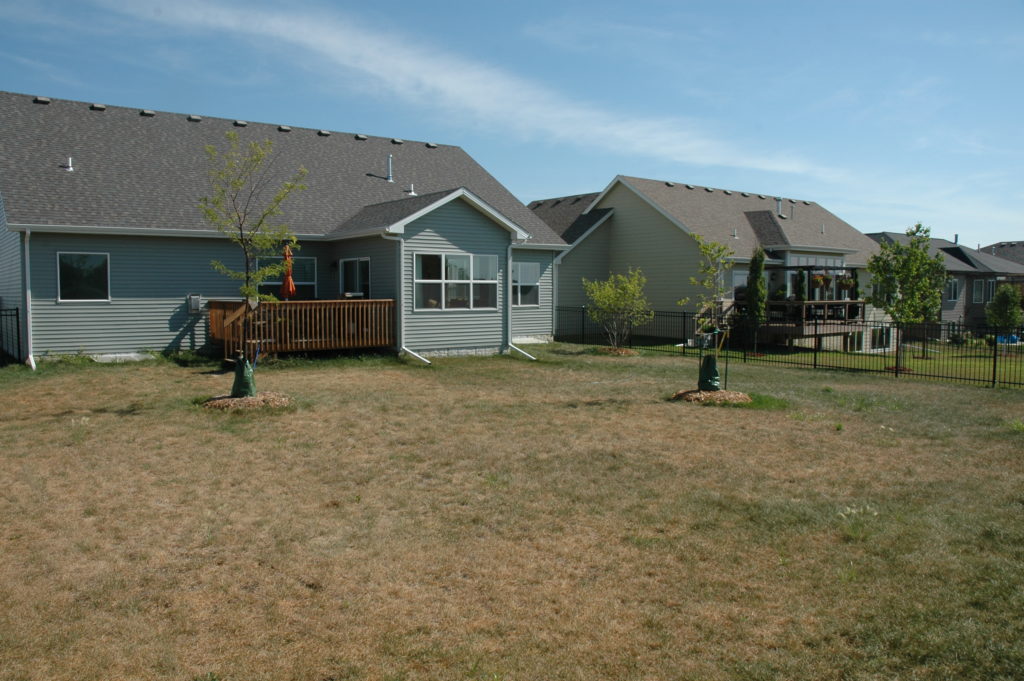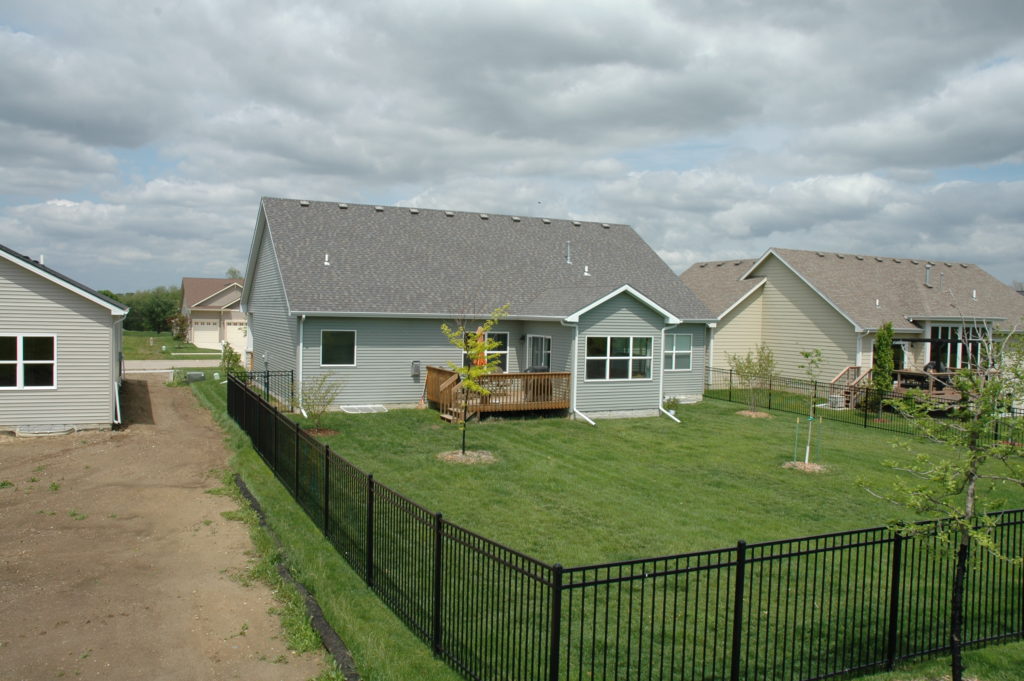Healthy soil forms the foundation of any effective rainscaping system. While often overlooked, soil quality dramatically affects how water moves through your landscape and how well your plants thrive.
The construction challenge
Most residential and commercial properties suffer from poor soil quality due to construction practices. During building, topsoil is stripped away, and heavy equipment compacts the clay-heavy subsoil. When construction finishes, only a thin layer of topsoil (if any) is typically replaced before laying sod or seeding.
The result? Yards with compacted, nutrient-poor soil that:
- Contributes to watershed pollution
- Prevents water infiltration, creating more runoff
- Restricts root growth, leading to stressed plants
- Requires more watering, fertilizer, and pesticides
The soil solution
Soil Quality Restoration (SQR) addresses these issues by reducing compaction and increasing organic matter. Healthy soil acts like a sponge, absorbing rainfall that would otherwise become runoff. It also provides a better growing environment for plants, leading to deeper root systems that can access water and nutrients more effectively.
Lawns with good soil quality require:
- Less maintenance overall
- Less watering during dry periods
- Fewer fertilizer applications
- Minimal pesticide treatments
Simple steps for existing lawns
Improving soil quality in an established yard is straightforward:
- Aerate thoroughly using a deep-tine aerator that removes soil cores rather than just punching holes
- Apply compost in a thin layer (¼-½ inch) evenly across the lawn surface
- Overseed with grass varieties matched to your existing lawn
- Water lightly until new grass establishes
This process works best in spring or fall when temperatures are moderate. For optimal results, repeat annually for 2-3 years until soil health improves. Many lawn care companies now offer soil quality restoration services if you prefer professional assistance.
By restoring your soil’s health, you’re not only creating a more beautiful and resilient yard but also making a significant contribution to watershed protection—all while reducing your long-term landscape maintenance needs.



